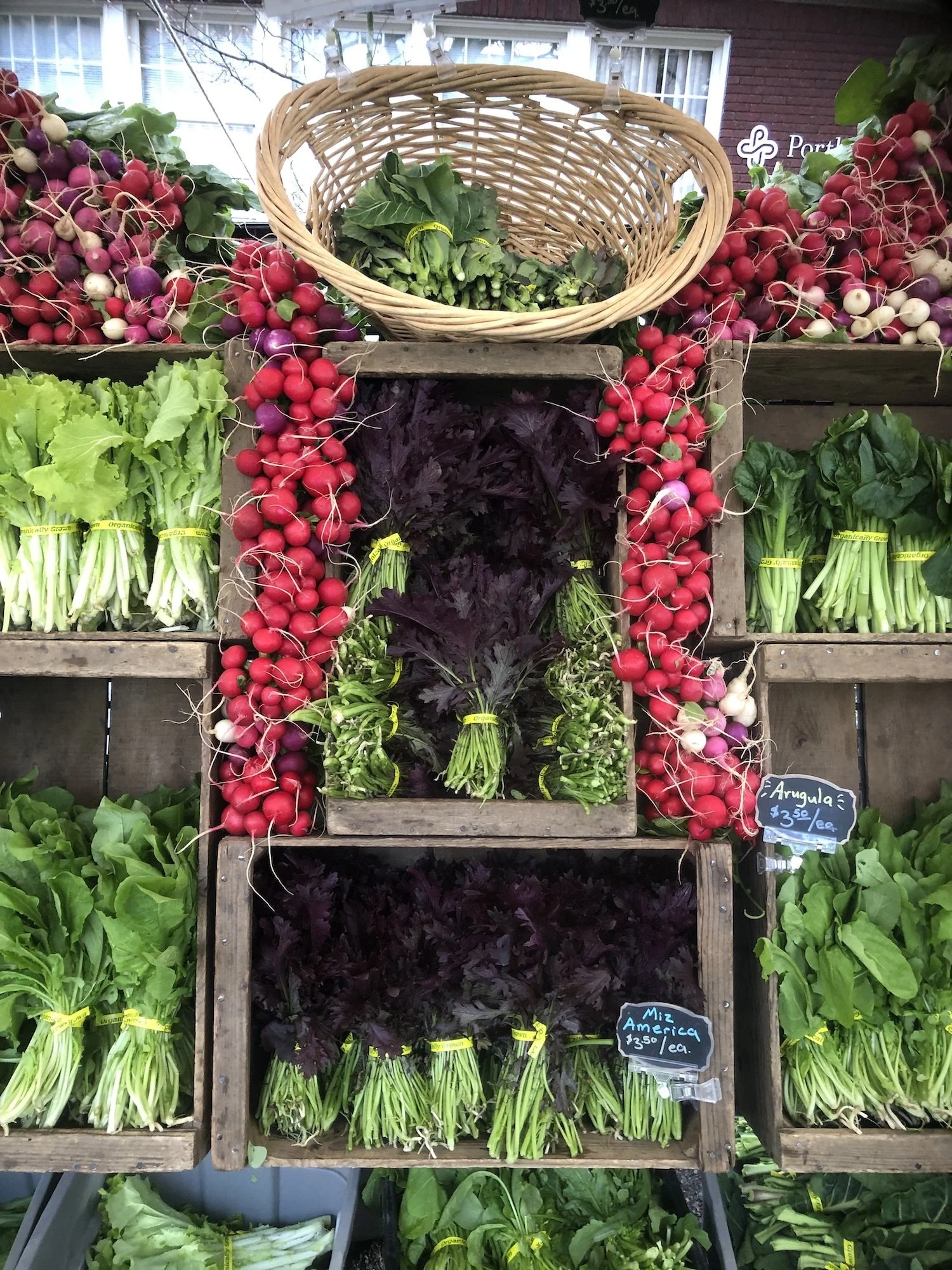Brassica Florets
From broccoli & cauliflower to raabs & rapinis, these veggies are all eaten and enjoyed when the plant goes to flower, but generally just before those flowers open. Those juicy bursting stalks of unopened flowers are what we call florets, which can be divided into three general categories: heading types, sprouting stalks, and raabs & rapinis.
While all these veggie treats can be enjoyed and highlighted in many different dishes, one simple fact remains the same. Hundreds of juicy florets provide a whole lot of surface area to get coated in garlic, salt, and oil, whether you roast, grill or sauté. Plop a couple fried eggs on top and let that yolk drizzle into the tender florets, and that’s all you need.
Heading Types
Broccoli and cauliflower are very well known florets, so common in fact that we might overlook the fact that they are actually made up of hundreds of flowers. Broccoli has looser florets whereas cauliflower has super tight fused florets, which changes their texture and the way that they cook.
Both come in a wide variety of colors. Cauliflower can be white, deep purple, vibrant green or orange. Broccoli spans the spectrum of greens and purples with varying floret size.
Then there’s Romanesco, the fabulous fractal floret that embodies the Fibonacci sequence in raw mathematical form. Botanically, romanesco is as different from cauliflower as it is from broccoli, but the florets are definitely tighter like a cauliflower. All three of these brassica florets are heading types, meaning that one plant generally produces just one big head of florets.
Sprouting Stalks
Both broccoli and cauliflower have been bred as non-heading varieties as well. Rather than the plant forming one big head, that first main floret is bred to be cut off the plant when it is young, which stimulates the growth of many side shoots or stalks. This includes broccolini, fioretto (also known as cauliflower sticks), and purple sprouting broccoli. These tender flower stalks are incredible roasted, grilled, or sautéed & eaten whole like asparagus with a little oil and salt.
Raabs & Rapinis
Unlike the heading and sprouting types of broccoli and cauliflower that are bred solely for their florets, raab & rapini are general terms for the flowering stalks of all plants in the Brassica family, an extra bonus treat that the plants offer come springtime.
All kales & collard greens, mustards & Asian greens, rutabagas, turnips, radishes, and even cabbages send up flowering stalks at the end of their lifecycle as they attempt to complete to reproduce and set seed. All raab tastes pretty much like a combination between broccoli and the plant that it is. For example, bok choy raab tastes like both broccoli and bok choy, lacinato kale raab tastes like lacinato kale and broccoli, etc.
Raab is only available for a tight window of time every spring which usually spans a few weeks to a month. The stalks must be enjoyed while they are still tender, before they get woody and start actually forming seed. However, the bright yellow open flowers are delicious as well, you may seem them available in bulk at some markets, but once open they don’t keep for very long, so they’re better as a treat enjoyed straight from the garden.

































